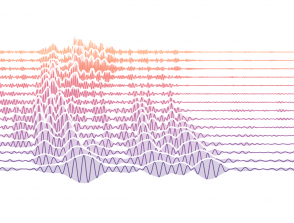Systematic analysis of long-period earthquakes : Gorely volcano, Kamchatka
Start: 01 October 2016
End: 18 March 2021
Supervisors :
Nikolai Shapiro
Related teams :
Seismology, Sismologie
Status: Defended
Gorely, being one of many active volcanoes in Kamchatka, stands out due to the rich magmatic history reflected in its composite structure and persistent degassing activity. In 2013–2014, a temporary network of 20 seismic stations was installed on the volcano to gather data autonomously for almost a year. During the four months of its high degassing rate, seismic activity was mostly expressed in the form of a long-period seismic tremor. In this study, a workflow based on the combination of back-projection, cluster analysis, and template-matching methods was developed to inspect the observed seismic signature. The processing of continuous seismic records yielded a catalog of individual long-period earthquakes that merges to constitute observed tremor-like signals. A catalog obtained using the back-projection detection algorithm consist of 1741 high-energy events. Cluster analysis revealed that a significant part of earthquakes in this catalog could be grouped into five families, which are sequentially organized in time. Utilizing stacked waveforms for each family in the template-matching detection resulted in the complementary catalog of 80,615 low-energy events. Such long-term occurrence of highly repetitive long-period earthquakes suggests a non-destructive mechanism that may correspond to several physical models. Ultimately, long-period earthquakes on Gorely represent a seismic signature of the magmatic system behaving in response to the high-pressure gases flowing from the decompressed magma chamber up to the volcano’s crater.





